French doors, with their elegant design and ability to let in ample natural light, are a beautiful addition to any home. However, ensuring that they stay securely closed can sometimes be a challenge, especially if they are exposed to strong winds or frequent use.
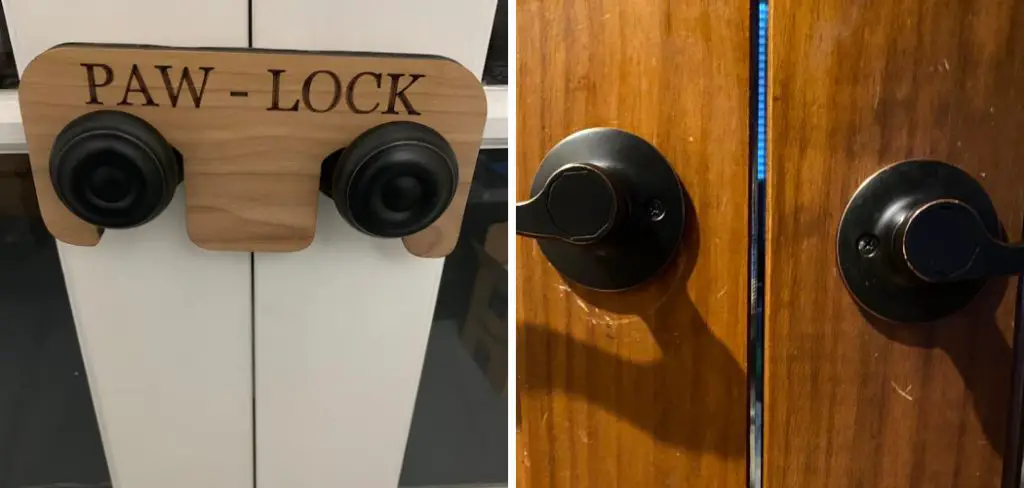
Whether you’re dealing with a misaligned door, worn-out hardware, or simply the natural expansion and contraction of materials due to weather changes, maintaining the functionality and security of your French doors is crucial.
This guide will provide you with practical solutions on how to keep french doors closed. We will cover a variety of methods, from simple adjustments and hardware replacements to innovative products designed specifically for French doors.
By implementing these strategies, you can enhance the performance and reliability of your doors, ensuring they remain both a stylish and functional feature of your home. Keep your living space comfortable and secure with these expert tips and techniques.
Importance of Securing French Doors
Securing French doors is essential for several reasons, ranging from enhancing home security to preserving energy efficiency.
Due to their wide and often fragile glass panes, French doors can be more vulnerable to break-ins if not properly secured.
By implementing effective locking mechanisms and sturdy hardware, you can significantly reduce the risk of unauthorized entry and protect your home and loved ones.
Additionally, ensuring your French doors close tightly can prevent drafts and air leaks, aiding in maintaining a consistent indoor temperature and reducing energy consumption.
Properly sealed doors also keep out insects and outdoor noise, contributing to a more comfortable and peaceful living environment. Overall, taking the time to secure your French doors properly not only enhances the aesthetics of your home but also its safety, efficiency, and comfort.
Common Challenges in Keeping French Doors Closed
There are several common challenges homeowners face when it comes to keeping French doors closed effectively.
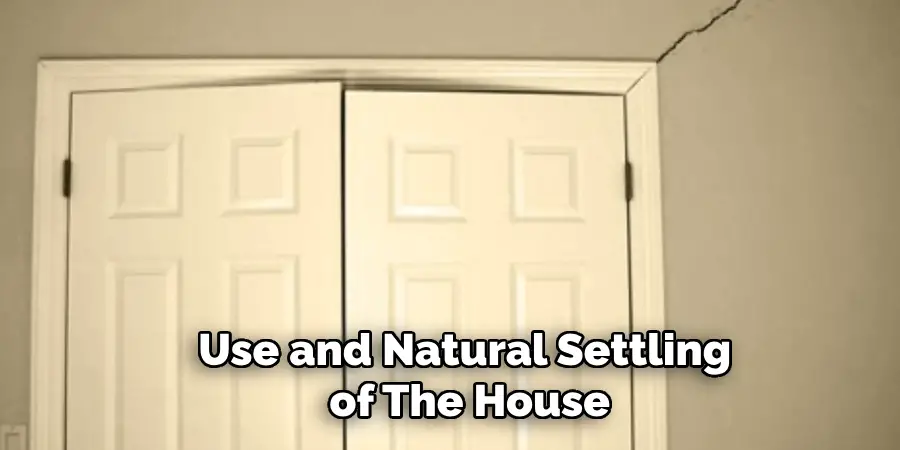
One frequent issue is misalignment. Over time, the everyday use and natural settling of the house can cause the doors to become misaligned, resulting in gaps that prevent the doors from closing properly.
Another prevalent problem is worn-out or faulty hardware; hinges, locks, and latches can become loose or broken, compromising the door’s ability to stay shut. Additionally, weather conditions play a significant role in the functionality of French doors. Changes in temperature and humidity can cause the materials to expand and contract, leading to fitment issues.
Drafts and air leaks are also common challenges that not only affect the door’s ability to stay closed but also impact the overall energy efficiency of your home. Understanding these challenges is the first step in maintaining the effectiveness of your French doors, ensuring they remain both a stylish and practical feature in your home.
Understanding French Door Mechanics
To effectively address the challenges in keeping French doors closed, it is essential to understand their mechanics.
French doors operate on a combination of hinges, locks, and latches that must work in harmony to ensure smooth and secure operation. The hinges, usually installed along the vertical edges of each door panel, bear the weight of the doors and allow them to swing open and shut.
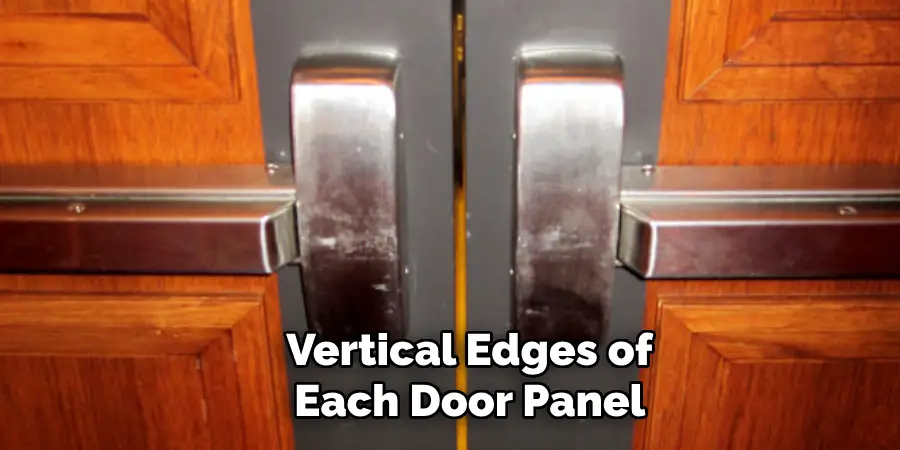
Properly aligned and lubricated hinges are crucial for the smooth functioning of the doors. Additionally, the locking system, which may include a combination of mortise locks, deadbolts, and multi-point locks, ensures the doors remain securely closed.
These locks engage with strike plates installed on the door frame, providing a tight seal that prevents the doors from being easily forced open.
Another important component is the door’s weatherstripping, which fills the gaps around the doors when closed to prevent drafts and improve energy efficiency. Weatherstripping materials can wear out over time, so regular inspection and replacement are necessary to maintain an effective seal.
Finally, understanding the role of the door sweeps, installed at the bottom of each door panel, helps in addressing issues related to drafts and insects entering through the gap between the door and the floor.
By gaining a clear understanding of these key components and how they interact, homeowners can better diagnose issues and implement effective solutions to keep their French doors securely closed.
Identification of Security Vulnerabilities
Identifying security vulnerabilities in French doors is crucial to ensure the safety and protection of your home. One of the most significant vulnerabilities lies in the door’s glass panes.
Although these panes provide aesthetic appeal and natural light, they can be more easily broken than solid wooden or metal doors, making unauthorized entry easier for intruders. To mitigate this risk, consider installing shatterproof or laminated glass that is more resistant to breakage.
Another area to focus on is the door’s locking mechanism. Basic lock systems may not provide sufficient security, especially if they are old or of poor quality.
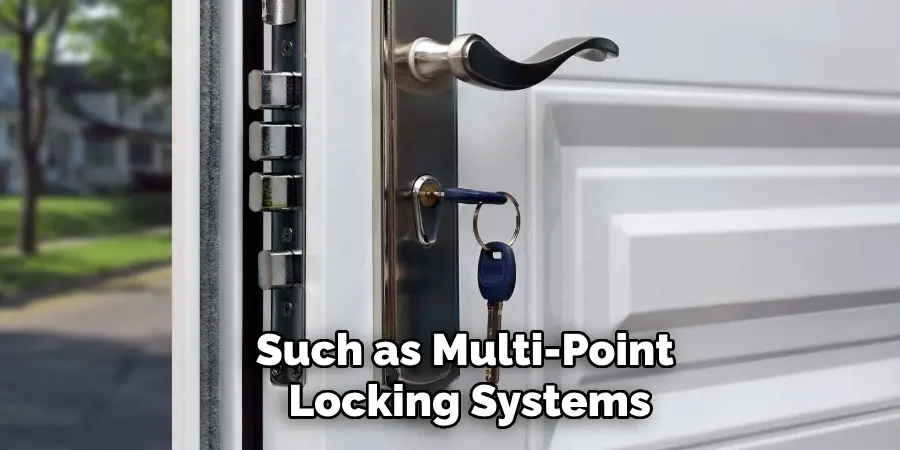
Upgrading to high-security locks, such as multi-point locking systems that secure the door at multiple points along the frame, can significantly enhance the door’s resistance to forced entry. Additionally, ensure that all strike plates are reinforced and securely fastened to the door frame.
Hinges also represent a potential security weak point. Exposed or externally mounted hinges can be tampered with, enabling an intruder to remove the door from its frame. Opting for hinges with security pins or installing hinge bolts can offer added protection against such tampering.
Lastly, it’s essential to check for any gaps around the door where tools could be inserted to force the door open. Ensuring weatherstripping and door seals are intact can help minimize these gaps and improve overall security.
By being aware of and addressing these vulnerabilities, homeowners can enhance the security of their French doors and provide a more secure living environment for themselves and their families.
Addressing Common Issues
Misalignment
One of the most prevalent issues with French doors is misalignment, which can result in gaps and difficulty in closing the doors properly.
To address this, first, inspect the hinges to ensure they are not loose or damaged. Tightening the screws on the hinges or replacing any worn-out components can realign the doors.
Additionally, adjusting the strike plate on the frame may be necessary to ensure the latch engages properly. For severe misalignment issues, it may be best to consult a professional to rehang the doors or adjust the jamb.
Worn-Out or Faulty Hardware
Hardware such as locks, handles, and latches are critical to the functionality and security of French doors. Over time, these components can wear out or become faulty. Regular maintenance, including lubricating moving parts and tightening screws, can prolong their lifespan.
If hardware components are beyond repair, consider replacing them with high-quality, durable alternatives. Upgrading to modern locking mechanisms can also enhance security and ease of use.
Weather-Related Issues

Changes in temperature and humidity can cause the materials in French doors to expand and contract, affecting their fit and function.
To mitigate this, ensure that the door frame and panels are made from materials that are less susceptible to weather-induced changes, such as composite or treated wood.
Applying weather-resistant finishes can also help protect the doors from the elements. Incorporating adjustable hinges and hardware can allow for minor adjustments to account for seasonal changes.
Drafts and Air Leaks
Drafts and air leaks not only make it difficult to keep French doors closed but also negatively impact your home’s energy efficiency. Installing high-quality weatherstripping around the edges of the doors can create a better seal and prevent drafts.
Regularly inspect and replace worn-out weatherstripping to maintain effectiveness. Additionally, using door sweeps at the bottom of each door panel can block drafts and prevent insects from entering through the gaps.
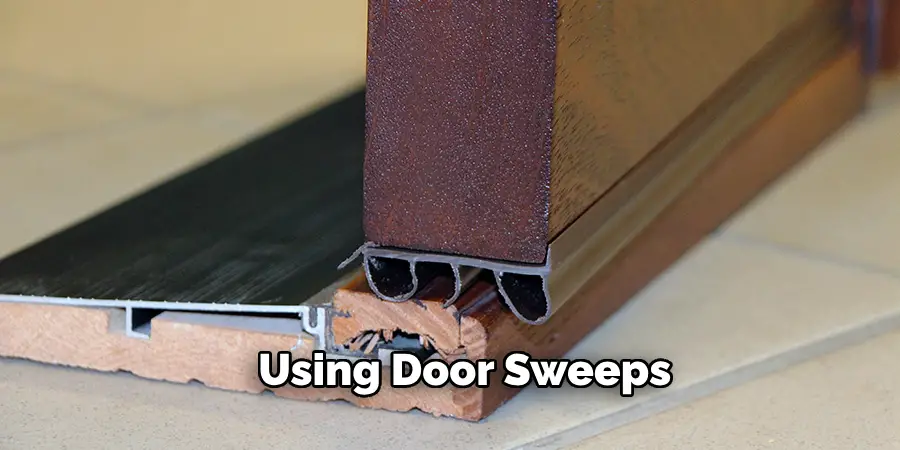
By addressing these common issues, homeowners can ensure that their French doors remain both functional and secure, providing both aesthetic value and practical benefits to their living spaces.
10 Methods How to Keep French Doors Closed
Method 1: Installing a Multipoint Locking System
A multipoint locking system is one of the most secure ways to keep French doors closed. This system involves multiple locks along the door frame that engage simultaneously when the door handle is lifted.
Typically, there are locks at the top, middle, and bottom of the door, which provide a tight seal and enhance security. To install a multipoint locking system, you may need professional assistance, as it requires precise alignment and drilling into the door frame.
Once installed, this system not only ensures the doors stay closed but also adds a significant layer of security against forced entry.
Method 2: Using Door Bolts
Door bolts are an effective and straightforward solution for keeping French doors closed. These bolts can be installed on the inside edge of one or both doors, typically at the top and bottom.
By sliding the bolts into their respective slots in the door frame or floor, you can secure the doors in place.
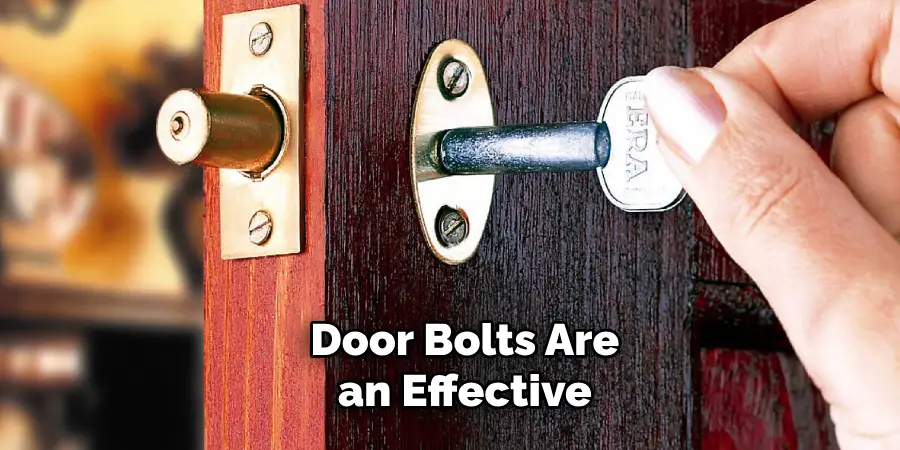
Installing door bolts requires minimal tools and can be a DIY project. Choose bolts that are sturdy and long enough to provide a secure hold. This method is particularly useful for preventing children or pets from accidentally opening the doors.
Method 3: Adding a Security Bar
A security bar is another practical solution for keeping French doors closed. This bar, usually made of metal, can be placed horizontally or vertically across the doors. For horizontal placement, install brackets on each door frame and place the bar across the middle of the doors.
For vertical placement, the bar can be secured from the floor to the top of the door. Security bars are adjustable and can be easily removed when not needed. They provide an additional layer of security and are particularly effective in windy conditions.
Method 4: Installing a Mortise Lock
A mortise lock is a traditional and highly effective way to secure French doors. This type of lock fits into a mortise, or pocket, cut into the edge of the door. It features a latch and a deadbolt that engage when the key is turned.
Mortise locks are known for their strength and durability, making them an excellent choice for French doors. Installing a mortise lock requires precision and may be best handled by a professional. Once installed, it provides a secure and aesthetically pleasing solution to keep your French doors closed.
Method 5: Using a Door Chain or Guard
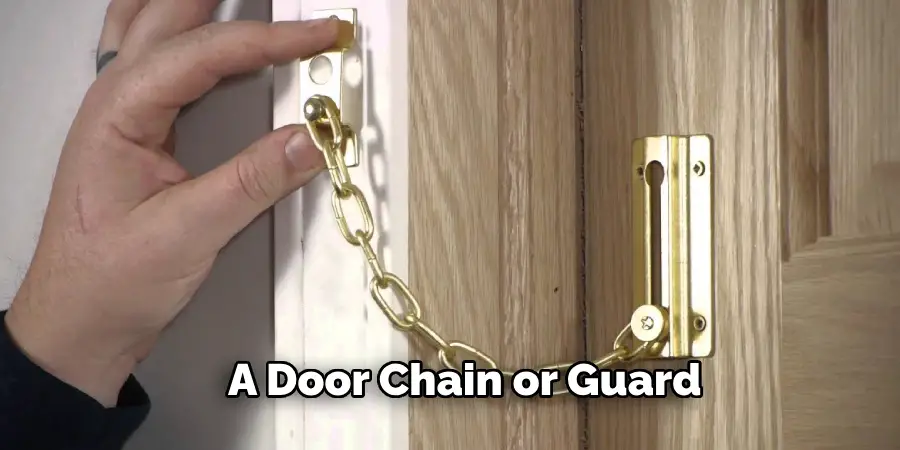
A door chain or guard can provide an additional layer of security for French doors. These devices allow you to open the doors slightly while keeping them secured, which is useful for ventilation or seeing who is outside without fully opening the doors.
To install a door chain or guard, attach one end to the door frame and the other to the door itself. When the chain or guard is engaged, it prevents the doors from being opened fully. This method is simple to install and provides an added sense of security.
Method 6: Applying Weatherstripping
Weatherstripping not only helps in sealing gaps to improve energy efficiency but also aids in keeping French doors closed. By applying weatherstripping around the edges of the doors, you create a tighter seal that reduces drafts and prevents the doors from rattling or opening due to wind.
There are various types of weatherstripping, such as adhesive-backed foam, rubber, or felt, which can be easily applied to the door frame. This method is cost-effective and enhances both the security and comfort of your home.
Method 7: Utilizing a Door Closer
A door closer is a mechanical device that automatically closes the door after it has been opened. Installing a door closer on French doors ensures they close securely every time they are opened.
There are different types of door closers, including hydraulic and pneumatic models, which can be surface-mounted or concealed within the door frame.
When installing a door closer, it’s important to choose one that matches the weight and usage frequency of your doors. This method is particularly useful for doors that see frequent use, ensuring they are never left ajar.
Method 8: Installing Magnetic Catches
Magnetic catches are a simple yet effective solution to keep French doors closed. These devices consist of a magnet and a metal plate that attach to the door and frame, respectively.
When the doors are closed, the magnet holds them securely in place. Magnetic catches are easy to install and can be adjusted for the desired strength. They are particularly useful for preventing doors from drifting open due to slight drafts or improper alignment.
This method is ideal for lightweight doors and provides a discrete solution.
Method 9: Using Adjustable Tension Rods
Adjustable tension rods can be used to apply pressure between the door handles or frames, helping to keep the doors closed. These rods are typically used for hanging curtains but can be repurposed for securing French doors.
Place the tension rod horizontally between the handles of the two doors, adjusting it to create a snug fit. This method is easy to implement and remove, making it a temporary yet effective solution for keeping the doors shut. It’s particularly useful for renters who need non-permanent fixes.
Method 10: Installing a Floor-Mounted Door Stopper
A floor-mounted door stopper can help keep French doors closed by providing a physical barrier that prevents them from swinging open.
These stoppers can be installed on the floor behind the doors or at the bottom edge where the doors meet. Choose a sturdy, adjustable model that can withstand the force of the doors.
Installation typically involves drilling into the floor and securing the stopper with screws. This method is effective in both securing the doors and preventing damage to walls or furniture caused by the doors swinging open.
Things to Consider When Choosing a Method to Keep French Doors Closed
When deciding on the best method to keep your French doors closed, there are several factors to consider to ensure you select the most appropriate and effective solution.
- Security Needs: Assess the level of security you need for your French doors. If enhanced security is crucial, opt for robust solutions like mortise locks or security bars rather than simpler methods like magnetic catches or tension rods.
- Ease of Installation: Consider how comfortable you are with DIY projects. Some methods, such as installing door bolts or weatherstripping, are relatively simple and can be done by most homeowners. Others, particularly the installation of mortise locks or hydraulic door closers, may require professional assistance.
- Door Material and Design: The materials and design of your French doors may influence your choice. For example, heavy or wooden doors will benefit from stronger mechanisms like security bars or mortise locks, while lightweight doors may be adequately secured with magnetic catches or tension rods.
Conclusion
Ensuring French doors remain closed involves a combination of security measures, mechanical solutions, and practical fixes.
By employing methods such as installing multipoint locking systems, door bolts, security bars, and mortise locks, you can significantly enhance the security and functionality of your doors.
Additional solutions like door chains, weatherstripping, door closers, magnetic catches, tension rods, and floor-mounted stoppers provide a comprehensive approach to keeping French doors securely shut.
Each method has its unique benefits and can be chosen based on specific needs, preferences, and the level of security required. Thanks for reading, and we hope this has given you some inspiration on how to keep french doors closed!
